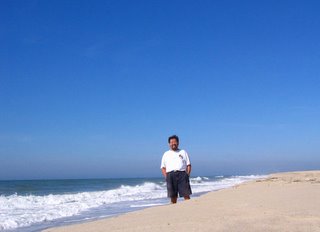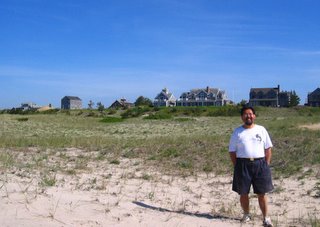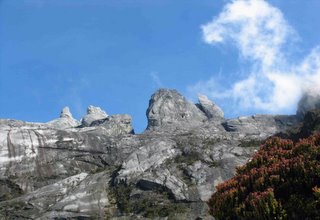Cape Cod in the Summer of 2005 - part 1
A short 2 hour bus ride from Boston on June 6, 2005 brings me to the ferry that takes vehicles and people to the port of Vineyard Haven in the district of West Tisbury on the holiday resort island of Martha's Vineyard. It is a picturesque island a little smaller than Penang island where I grew up. It has quaint little communities spread all over what used to be an island where fishing was the major occupation before tourists discovered it's idyllic charms.
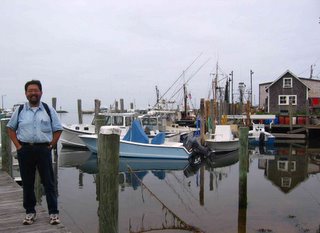
Seafood here is really fresh and good and one of the highlights was tucking into a 3 pound lobster just off the jetty of a small fishing village called Menemsha. Fog often obscures the best views and is something islanders have become used to.
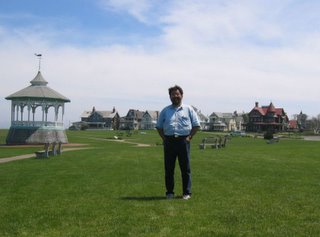
There are fabulous houses built by wealthy people all over Martha's Vineyard and the ones behind me on Oak Bluffs are some of the older ones. There are far more elaborate ones and some with modern designs tucked away along the quieter parts of the island - many of which have private beaches which are a pain for the regular person.

Not exactly a massive airliner that one gets on to get from Martha's Vineyard airport to the neighbouring island of Nantucket which in many respects is like Martha's Vineyard but smaller, quieter and more deeply steeped in history.
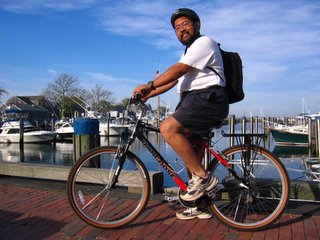
One of the best ways to get around the Cape and Nantucket island in particular is a sturdy comfortable bicycle. The Mongoose I am riding is a rental.
The beautiful old harbour in the background is where much of the maritime activity starts from.
The Atlantic ocean on a relatively calm day. On the first day I arrived on Nantucket, the ocean was rough and with a strong wind blowing, white caps graced the wild ocean scene.
The old Lifeguard Station is one of the houses in the background just behind Surfside beach. It is now a comfortable youth hostel.
